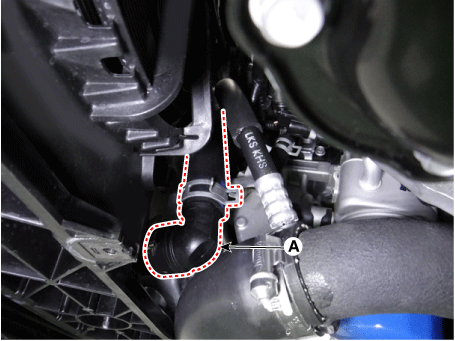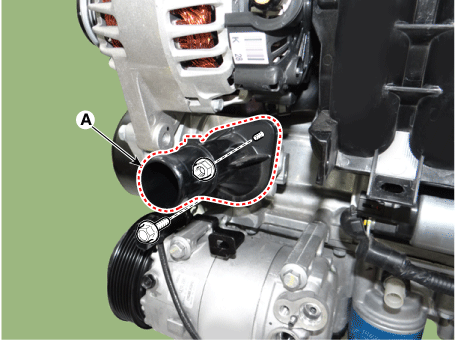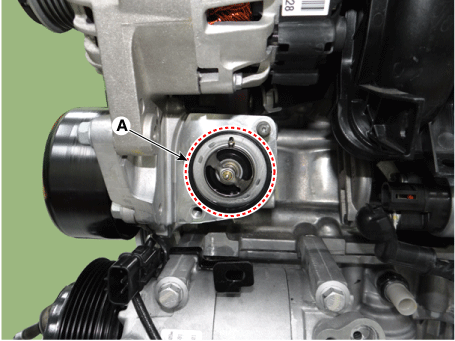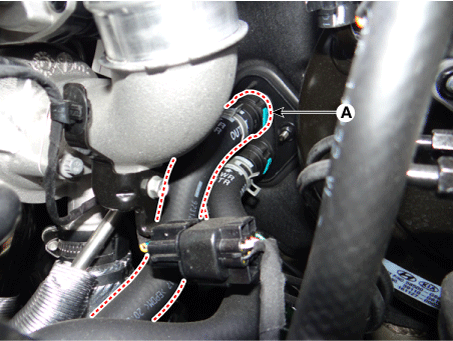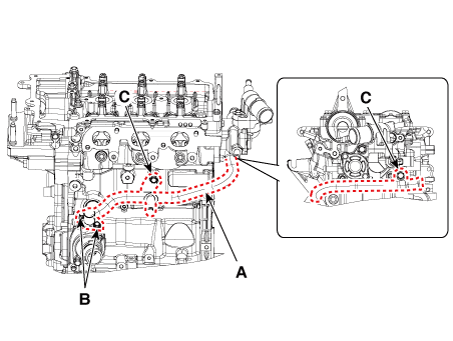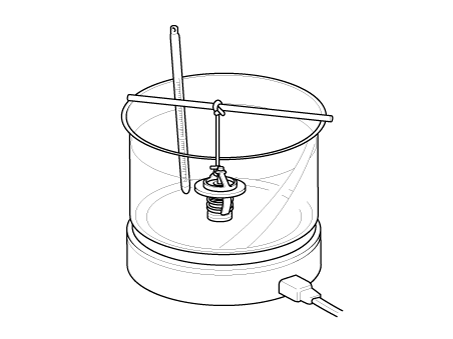Symptoms
|
Possible Causes
|
Remedy
|
Coolant leakage
| | •
| From the thermostat gasket |
| Check the mounting bolts
| | •
| Check the torque of the mounting bolts |
| | •
| Retighten the bolts and check for leakage again. |
|
Check the gasket for damage
| | •
| Check gasket or seal for damage |
| | •
| Replace gaskets and reuse the thermostat. |
|
Cooled excessively
| | •
| Low heater performance (cool air blows out) |
| •
| Thermogauge indicates 'LOW' |
| Visually check after removing the radiator cap.
| | •
| Insufficient coolant or leakage. |
| | •
| After refilling coolant, recheck. |
|
Check KDS & start engine
| | •
| Check connection of the fan clutch or the fan motor. |
※ If the fan clutch is always connected, there will be a noise at idle.
| | •
| Check the engine coolant sensor, wiring and connectors. |
| •
| Replace the components. |
|
Remove the thermostat and inspect
| | •
| Check for dust or chips in the thermostat valve. |
| •
| Check for sticky thermostat valve. |
| | •
| Clean the thermostat valve and reuse the thermostat. |
| •
| Replace the thermostat, if it doesn't work properly. |
|
Heated excessively
| | •
| Thermogauge indicates 'HI' |
| Visually check after removing the radiator cap.
| | •
| Insufficient coolant or leakage. ※ Be careful when removing the radiator cap from an overheated vehicle. |
| •
| Check air in cooling system. |
| | •
| After refilling coolant, recheck. |
| •
| Check the cylinder head gaskets for damage and the tightening torque of the mounting bolts. |
|
Check KDS & start engine
| | •
| Check the fan motor performance as temperature varies. |
| •
| Check if the fan clutch slips. |
| •
| Check for sticky water pump or damaged impeller. |
| | •
| Check the engine coolant sensor, wiring and connectors. |
| •
| Check the fan motor, the relay and the connector. |
| •
| Replace the fan clutch, if it doesn't work properly. |
| •
| Replace the water pump, if it doesn't work properly. |
|
Immerse the thermostat in boiling water and inspect.
| | •
| Check that the thermostat opens at the valve opening temperature. |
※ ※ Check that the thermostat opens at the valve opening temperature.
| | •
| Replace the thermostat, if it doesn't work properly. |
|
 Water Temperature Control Assembly
Water Temperature Control Assembly Cylinder Block Assembly
Cylinder Block Assembly


